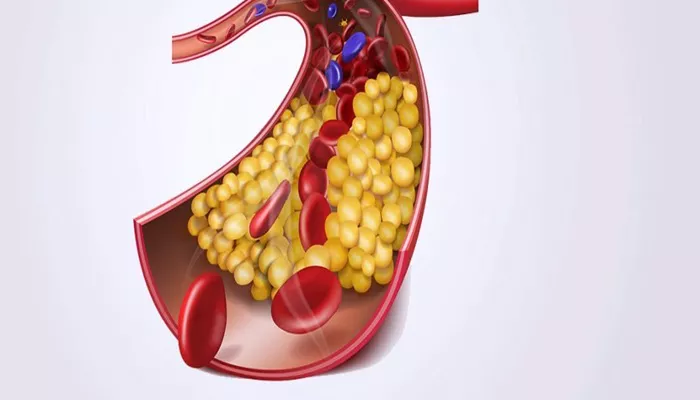Familial hyperlipidemia and hypercholesterolemia are two terms often encountered in discussions about lipid disorders.
While they share some similarities, they represent distinct medical conditions with different implications for health.
Understanding these differences is crucial for effective diagnosis, treatment, and management of cardiovascular risks associated with elevated lipid levels. This article aims to elucidate the differences between familial hyperlipidemia and hypercholesterolemia, exploring their definitions, causes, symptoms, risk factors, diagnosis, and treatment options.
Definitions
Familial Hyperlipidemia refers to a genetic disorder characterized by elevated levels of lipids in the blood. It is inherited in an autosomal dominant manner, meaning that only one copy of the mutated gene from either parent can cause the disorder. Familial hyperlipidemia can lead to significantly high levels of low-density lipoprotein (LDL) cholesterol and triglycerides, increasing the risk of cardiovascular diseases at an early age.
SEE ALSO: What Is The First Treatment for Hyperlipidemia?
Hypercholesterolemia, on the other hand, specifically indicates high levels of cholesterol in the blood. It can be classified into primary (genetic) and secondary (lifestyle-induced) types. Primary hypercholesterolemia may include familial hypercholesterolemia as a subset, but it also encompasses other genetic variations affecting cholesterol metabolism.
Differences Between Familial Hyperlipidemia And Hypercholesterolemia
Genetic Basis
Familial hyperlipidemia is primarily a genetic condition caused by mutations in genes responsible for lipid metabolism. The most common mutation occurs in the LDL receptor gene located on chromosome 19. This mutation impairs the liver’s ability to remove LDL cholesterol from the bloodstream effectively, leading to elevated levels.
In contrast, hypercholesterolemia can arise from both genetic and environmental factors. While familial hypercholesterolemia is a specific genetic form of hypercholesterolemia, other forms can result from dietary habits, obesity, diabetes, and sedentary lifestyle choices.
Types of Lipids Affected
Familial hyperlipidemia typically results in elevated levels of LDL cholesterol and triglycerides. In individuals with this condition, LDL levels can reach dangerously high values (often above 190 mg/dL), which significantly increases the risk for atherosclerosis and cardiovascular events.
Hypercholesterolemia specifically refers to high cholesterol levels but does not necessarily imply elevated triglycerides. It can involve increased total cholesterol or specifically high LDL cholesterol levels while HDL (high-density lipoprotein) cholesterol may be low or normal.
Clinical Presentation
Individuals with familial hyperlipidemia may present with xanthomas—fatty deposits under the skin—and corneal arcus—cholesterol deposits around the cornea—at a young age. These physical manifestations are indicative of severe lipid abnormalities and cardiovascular risks.
Hypercholesterolemia alone may not present with visible symptoms until significant cardiovascular damage has occurred.
Regular lipid panel screenings are essential for early detection since many individuals remain asymptomatic.
Risk Factors
Familial hyperlipidemia is inherited and presents at birth. Individuals with this condition have a higher likelihood of experiencing cardiovascular events at a younger age compared to those with lifestyle-induced hypercholesterolemia.
Conversely, hypercholesterolemia can be influenced by various lifestyle factors such as diet high in saturated fats, lack of exercise, smoking, and excessive alcohol consumption. Age and family history also play significant roles in determining risk.
Diagnosis
Diagnosis of familial hyperlipidemia typically involves a combination of family history assessment, physical examination for xanthomas or corneal arcus, and blood tests showing markedly elevated LDL cholesterol levels. Genetic testing may also be conducted to confirm mutations in relevant genes.
For hypercholesterolemia, a lipid panel blood test is usually sufficient to determine total cholesterol levels, LDL cholesterol levels, HDL cholesterol levels, and triglycerides. If elevated cholesterol is detected, further evaluation may focus on identifying underlying causes or contributing factors.
Treatment Approaches
Familial Hyperlipidemia requires aggressive management due to its genetic nature and associated risks. Treatment often includes:
Lifestyle Modifications: Dietary changes focusing on reducing saturated fat intake and increasing physical activity.
Medications: Statins are commonly prescribed to lower LDL cholesterol levels effectively. Other medications like ezetimibe or PCSK9 inhibitors may be considered for individuals who do not respond adequately to statins.
Regular Monitoring: Continuous follow-up with healthcare providers to monitor lipid levels and adjust treatment plans as necessary.
Hypercholesterolemia treatment strategies depend on whether it is primary or secondary:
Lifestyle Changes: Emphasis on healthy eating habits, regular exercise, weight management, and smoking cessation.
Medications: Statins are also first-line treatments for lowering cholesterol in individuals with hypercholesterolemia; however, the approach may vary based on individual risk factors.
Underlying Conditions: Addressing any contributing conditions such as diabetes or hypothyroidism is critical in managing secondary hypercholesterolemia.
Conclusion
Understanding the differences between familial hyperlipidemia and hypercholesterolemia is essential for effective diagnosis and management of these conditions. Familial hyperlipidemia represents a serious genetic disorder that necessitates early intervention to prevent cardiovascular complications. In contrast, hypercholesterolemia encompasses a broader spectrum of conditions that can be influenced by both genetic predispositions and lifestyle factors.
Early detection through regular screening is vital for both conditions as many individuals remain asymptomatic until significant health issues arise. Healthcare providers must focus on personalized treatment plans that incorporate lifestyle changes alongside pharmacological interventions when necessary to manage lipid levels effectively.
Related topics:
- Which Statin Drug Is The Safest?
- How Does Hyperlipidemia Cause Hyponatremia?
- Which Is Safer, Atorvastatin or Rosuvastatin?

